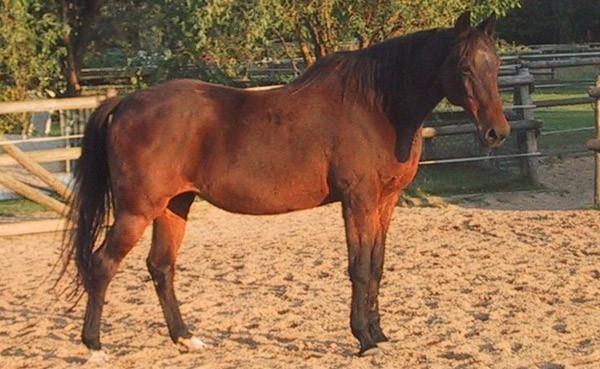Type the name of the breed you're looking for below
[wpdreams_ajaxsearchlite] Don't see the breed your're looking for? Click here and let us know!
Anglo-Kabarda horse
| Country Of Origin | Russia |
| History and Background | Formally known as Anglo-Kabardinskaya porodnaya-gruppa, the Anglo-Kabarda is technically the result of the cross between an English Thoroughbred stallion and a Kabarda mare -- thus its name, which literally means "English Kabarda." There are three main Thoroughbred stallions that are primarily credited with the propagation of the Anglo-Kabarda breed: Loksen, Leikki, and Lestorik. Current breeding standards demand that an Anglo-Kabarda horse have between 25 and 75 percent English Thoroughbred blood. To be registered they must possess no less than 25% and no more than 75% Thoroughbred blood. Created in the northern Caucasus area of the Karbardino-Balkar Republic by crossing Kabarda (or Kabardin) mares with Thoroughbred stallions. Developed in tandem with the Kabarda breed, the local people of the area needed quick, strong mounts that could thrive on the poor fodder and dangerous conditions of mountainous terrain. The best of the Anglo-Kabarda breed retains the size and speed of the Thoroughbred with the endurance and sure-footedness of the Kadarba. Hard Existence; The local breeds were developed to live their lives outside in herds and are not provided with shelter or supplemental feed (unless absolutely necessary). Introduction of Thoroughbred blood made Anglo-Kabardas more susceptible to the harsh conditions. So a fine balance had to be struck, adding enough Thoroughbred blood for larger, faster animals – but not enough that they became unable to survive in local conditions. Modern Anglo-Kabarda; Horses are still very much used for transport around mountainous regions of the Caucasus, as the treacherous terrain makes vehicles impossible. The Anglo-Kabarda is appreciated for their speed and agility while remaining surefooted as well as easy to care for. They are still used to transport goods, tourists and local people over difficult terrain. Today, there are around 6,300 Anglo-Kabardas, many of which are used in national and Olympic-level equestrian events. Aside from being a good sports horse, however, the Anglo-Kabarda is used as a farm and work horse in Caucasus. |
| Use Today | Riding horse, Working horse, Farm horse, Show horse |
| Height | 15.2 to 16 hands high (60.8-66.4 inches, 154-159 centimeters) |
| Colour | Found in most solid colours |
| Characteristics | The Anglo-Kabarda is larger and faster than the pure Kabarda, though it has inherited its straight back, slightly sloped croup and sure-footedness from the Kabarda. Additionally, the Anglo-Kabarda inherited its well-formed joints, sloping shoulders and long legs and neck from its other progenitor: the Thoroughbred. |
| Personality and Temperament | Anglo-Kabarda horses are reliable, true, brave and energetic |



